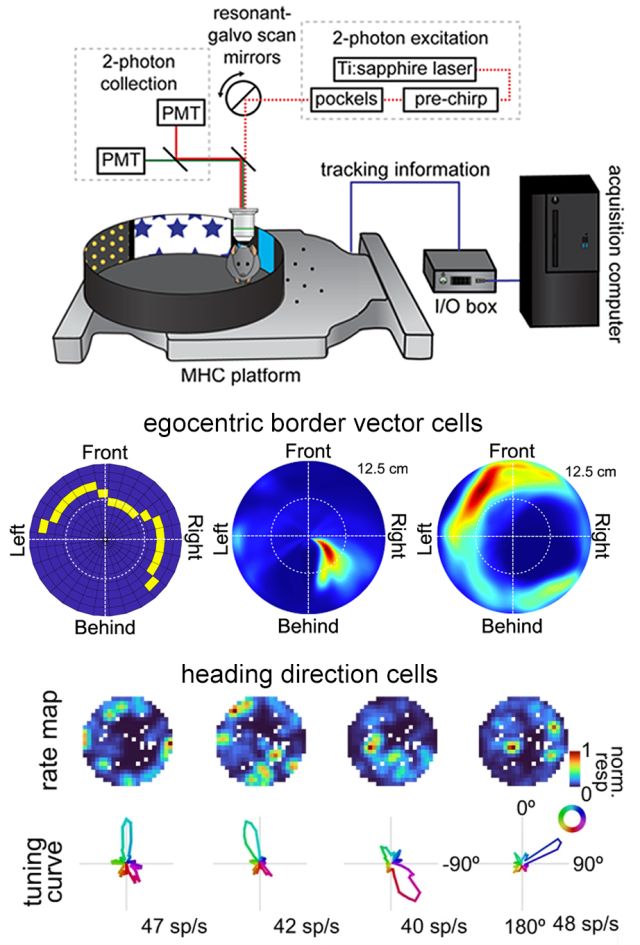
Visual contributions to spatial perception
Upon entering an unfamiliar room, with a quick glance around we are able to generate a model of the local spatial environment, including the location of walls, obstacles and other people.
A major research direction in the lab is understanding how we generate this spatial model from visual input entering the retina. We believe the transformations that take place during this process are the key to understanding how the brain builds complex models from simple inputs.
A few specific research questions we are focusing on:
1) How do mice perceive the distance of visual objects and use them to generate spatial models?
2) How do cortical circuits transform visual inputs from retinal coordinates to spatial coordinates?
3) How are visual inputs used to anchor internal representations of space (such as heading direction) to the external environment?